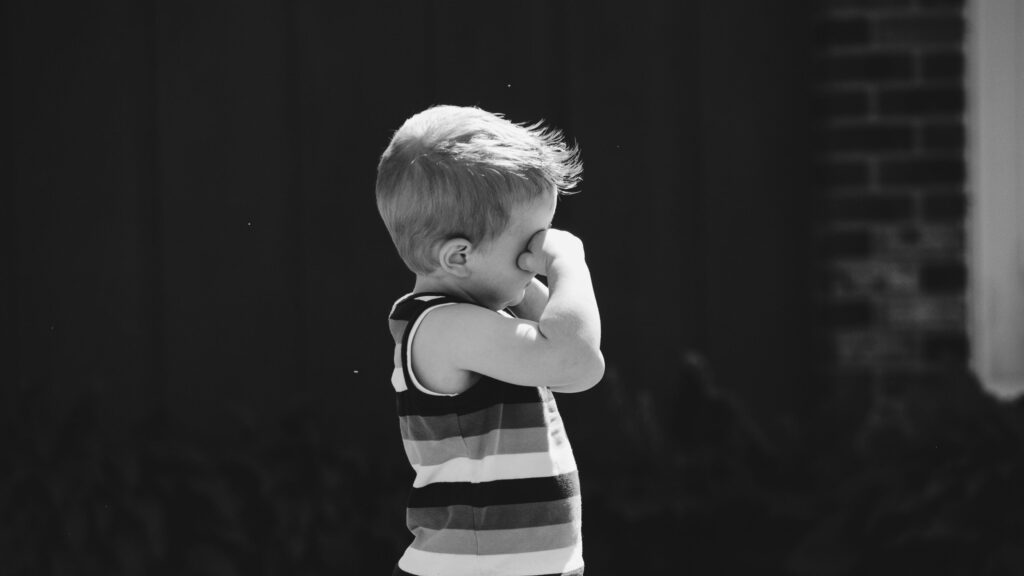Emotions can be overwhelming for young children. One moment they are giggling, the next they are in tears. Big feelings are part of healthy development, but without the right support, these emotions can lead to meltdowns.
In this guide, we will explore why children have intense emotions, how parents can support them, and practical strategies to help your child regulate their feelings. You will also find UK-based resources, a helpful chart, and parent-friendly tips that make the process easier for the whole family.
Understanding Big Feelings in Children
Big feelings refer to emotions that feel intense and hard for children to control, such as anger, frustration, sadness, or excitement. These emotions can be particularly strong in toddlers and preschoolers because their brains are still developing the skills needed for self-regulation.
The NHS explains that tantrums are often a way for young children to express feelings they cannot yet put into words. This is why they might shout, cry, or hit when they are frustrated.
Expert Tip: Remember that a meltdown is not the same as bad behaviour. It is a signal that your child is overwhelmed and needs support, not punishment.
Why Big Feelings Happen
Big feelings are influenced by both brain development and environmental factors. The prefrontal cortex, which helps manage impulses and emotions, is not fully developed until adulthood. This means children rely heavily on the emotional centre of their brain, making it harder to pause and think before reacting.
Other factors that can trigger strong emotions include:
Hunger or tiredness
Changes in routine
Feeling misunderstood
Overstimulation from noise, lights, or busy environments
Separation from a parent or caregiver
Spotting the Signs of Emotional Overload
By recognising early warning signs, you can step in before your child reaches meltdown stage.
| Early Sign | What It Might Look Like | How to Respond |
|---|---|---|
| Irritability | Snapping at siblings or refusing requests | Offer a calm break or quiet activity |
| Restlessness | Fidgeting, pacing, unable to sit still | Suggest movement, like a walk or dancing |
| Withdrawal | Avoiding eye contact, going quiet | Sit near them and offer gentle reassurance |
| Verbal Cues | Saying “I hate this” or “Leave me alone” | Acknowledge feelings and listen without judgement |
Parent Tip: Keep a journal of triggers and early signs. This can help you spot patterns and prevent meltdowns.
Strategies to Help Your Child Cope with Big Feelings
1. Name the Emotion
Children often feel calmer when their emotions are acknowledged.
Example: “It looks like you are feeling really frustrated because your tower fell over.”
2. Create a Calm Space
Set up a cosy corner with cushions, soft toys, and calming items where your child can go to regulate emotions.
3. Use Deep Breathing Techniques
Teach your child to take slow breaths by pretending to blow bubbles or smell a flower.
Pro Tip: Practice breathing exercises when your child is calm so they can use them more easily during stressful moments.
4. Model Healthy Emotional Expression
Let your child see you managing your own emotions, such as saying, “I am feeling a bit stressed, so I am going to take a few deep breaths.”
5. Offer Sensory Tools
Items like stress balls, fidget toys, or a weighted blanket can help children channel their emotions.
6. Keep Routines Consistent
Predictable routines provide a sense of safety, reducing emotional outbursts.
7. Use Stories to Teach About Feelings
Books such as The Colour Monster or Have You Filled a Bucket Today? help children understand emotions through relatable characters.
Teaching Emotional Regulation Skills
It is important to give your child tools they can use independently. Skills like problem-solving, asking for help, and self-soothing should be practised regularly.
The Place2Be charity offers guidance on building emotional literacy, which helps children put words to their feelings and seek support when needed.
Real Life Scenario 1: Toddler Tantrum at the Supermarket
You are halfway through your weekly shop when your toddler spots sweets at the checkout. When you say no, they drop to the floor crying. Instead of raising your voice or giving in, you crouch down and calmly say, “You are feeling upset because you cannot have sweets right now. Let us take three deep breaths together.” Then you offer a small toy or snack you packed in advance. This helps redirect their attention and shows them that emotions can be acknowledged and managed without a meltdown.
Real Life Scenario 2: Preschooler Upset at Playgroup
Your four-year-old is building a tower when another child knocks it over. They start shouting and pushing blocks away. You step in, kneel to their level, and say, “I can see you are angry because your tower got knocked down.” You encourage them to take a break in the calm corner you set up at home. Later, you read a feelings book together and talk about what to do next time something like this happens.
Emotional Coaching Techniques
Emotional coaching is about guiding your child through their emotions rather than avoiding them. Here are some steps you can follow:
Notice the emotion before it becomes overwhelming.
Label the feeling to show your child you understand.
Validate their experience so they feel heard.
Teach problem-solving by asking, “What could we do next?”
Revisit the event later to reflect and learn from it.
If you want to dive deeper into the art of guiding children through their feelings, the book No-Drama Discipline by Dr Daniel J. Siegel and Dr Tina Payne Bryson is a highly recommended read. It explains how to connect with your child in the middle of challenging behaviour, defuse the situation without escalating emotions, and use discipline as an opportunity to teach rather than punish. Many parents find it helps them stay calm while giving children the tools they need to self-regulate.
Expert Tip: The charity Young Minds recommends keeping conversations short and positive for young children, focusing on what they can do next time.
A Sample Emotional Regulation Routine
| Time of Day | Activity | Purpose |
|---|---|---|
| Morning | 2 minutes of breathing or stretching | Start the day calm and focused |
| After School | Snack and “feelings check-in” | Let your child decompress before homework |
| Evening | Storytime about emotions | Build awareness in a relaxed setting |
When to Seek Extra Support
Sometimes big feelings are part of a bigger challenge. If meltdowns are frequent, intense, or affecting daily life, speak to your GP or health visitor. They may refer you to services like Young Minds or Family Lives for additional support.
Final Thoughts
Helping children cope with big feelings is about patience, empathy, and teaching practical tools. With consistent support, your child can learn to recognise their emotions, manage them in healthy ways, and avoid meltdowns.
Remember, big feelings are not a sign of failure. They are an opportunity to connect with your child and guide them towards resilience. By noticing triggers, offering comfort, and giving them the skills to cope, you are building their emotional strength for life.



